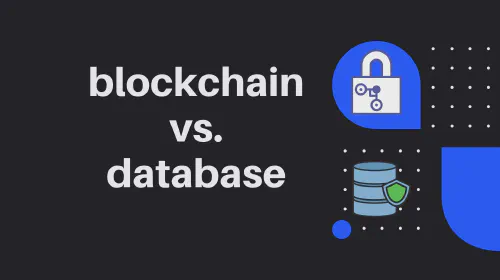Cardano vs Iota: Exploring the Contrasts in Cryptocurrency
Salomon Kisters
Oct 5, 2023This post may contain affiliate links. If you use these links to buy something we may earn a commission. Thanks!
Welcome to another exciting comparison in the world of cryptocurrency!
Today, we’re going to delve into the differences between Cardano and Iota, two popular blockchain projects that have gained significant attention in the digital currency realm.
Both Cardano and Iota aim to revolutionize the way transactions are conducted, but they do so in unique ways. So, if you’re curious about these groundbreaking platforms and want to explore which one is right for you, keep reading!
In this blog post, we’ll walk you through the various aspects of Cardano and Iota, comparing their underlying technology, consensus mechanisms, scalability, use cases, and future prospects.
Underlying Technology
To truly understand the differences between Cardano and Iota, it’s important to first grasp their respective underlying technologies. Cardano, founded by Ethereum co-founder Charles Hoskinson, is built on a proof-of-stake blockchain. It utilizes a layered structure, separating the settlement and computation layers, to enhance security and scalability. On the other hand, Iota takes a different approach with its unique technology called Tangle. Tangle is a directed acyclic graph (DAG) architecture that enables feeless microtransactions and promotes scalability. It doesn’t rely on miners and eliminates the need for traditional blockchains.
Consensus Mechanism
Now, let’s dive into the consensus mechanisms employed by Cardano and Iota. Cardano uses a proof-of-stake consensus called Ouroboros, which involves stakeholders staking their coins to participate in the network’s block production and validation process. Ouroboros is designed to be energy-efficient, secure, and scalable, enabling transactions to be processed quickly and cost-effectively. In contrast, Iota utilizes a consensus mechanism called the Coordinator. The Coordinator serves as a temporary safety measure until the network becomes decentralized. While some argue that the Coordinator contradicts the concept of decentralization, Iota plans to remove it completely in the near future.
Scalability
Scalability is a crucial factor when exploring different blockchain solutions. Cardano shines in this aspect, thanks to its two-layer architecture. By separating the settlement and computation layers, Cardano is able to handle a significantly higher number of transactions per second compared to traditional blockchain platforms. Moreover, Cardano’s scalability is further enhanced through sidechains, which allow for specific use case applications without congesting the main blockchain. Iota also boasts impressive scalability through Tangle. As more users and devices join the Iota network, transaction speeds are expected to improve, making it a viable contender in the realm of Internet of Things (IoT) and machine-to-machine (M2M) transactions.
Use Cases
The use cases for Cardano and Iota differ due to their distinct approaches and underlying technologies. Cardano aims to provide solutions for governmental and institutional use cases, including supply chain management, voting systems, and identity verification. Its layered structure and focus on smart contracts make it well-suited for such applications. Iota, on the other hand, targets microtransactions and data transfer within the rapidly growing IoT industry. With its feeless transactions and scalable Tangle technology, Iota presents itself as a formidable player in the realm of IoT-based applications, enabling secure data sharing and monetization in a decentralized manner.
Future Prospects
Both Cardano and Iota hold immense potential for the future, with ambitious roadmaps and dedicated teams. Cardano’s ongoing development and planned updates, such as the implementation of smart contracts through the Alonzo upgrade, suggest continued improvement and innovation in the coming years. Additionally, Cardano’s commitment to peer-reviewed research and rigorous scientific approach instills confidence in its long-term vision. Meanwhile, Iota’s focus on IoT and the increasing demand for machine-to-machine transactions positions it as a significant player in this rapidly expanding field. With the removal of the Coordinator and advancements in scalability, Iota aims to become the go-to platform for securing and managing IoT devices, creating a more interconnected world.
Conclusion
As we wrap up this comparison between Cardano and Iota, it’s evident that both platforms offer unique features and have their own set of advantages.
Cardano’s layered structure, proof-of-stake consensus, and focus on smart contracts make it an appealing choice for institutional and governmental use cases. On the other hand, Iota’s feeless microtransactions and scalable Tangle technology make it an attractive option for the flourishing IoT industry.
Ultimately, the choice between Cardano and Iota depends on your specific needs and the use case you have in mind. Consider factors such as scalability, underlying technology, consensus mechanisms, and future prospects when making your decision.
Whichever path you choose, it’s exciting to see these revolutionary projects shaping the future of decentralized finance and technology.
Stay informed with the latest insights in Crypto, Blockchain, and Cyber-Security! Subscribe to our newsletter now to receive exclusive updates, expert analyses, and current developments directly to your inbox. Don't miss the opportunity to expand your knowledge and stay up-to-date.
Love what you're reading? Subscribe for top stories in Crypto, Blockchain, and Cyber-Security. Stay informed with exclusive updates.
Please note that the Content may have been generated with the Help of AI. The editorial content of OriginStamp AG does not constitute a recommendation for investment or purchase advice. In principle, an investment can also lead to a total loss. Therefore, please seek advice before making an investment decision.

Blockchain vs Database: Key Differences Explained
Understand the key differences between Blockchain and Database, from decentralization to security, in this detailed comparison.

Digital Archiving - Key Concepts and Best Practices Explained
Digital archiving refers to the process of preserving and managing digital content for long-term access and usability. Explore key concepts and best practices in this field.

How to Learn About Blockchain Technology
Literature about Blockchain technology is everywhere. Here is an overview of recommended books and courses that help you to learn about blockchain technologies.
Protect your documents
Your gateway to unforgeable data. Imprint the authenticity of your information with our blockchain timestamp